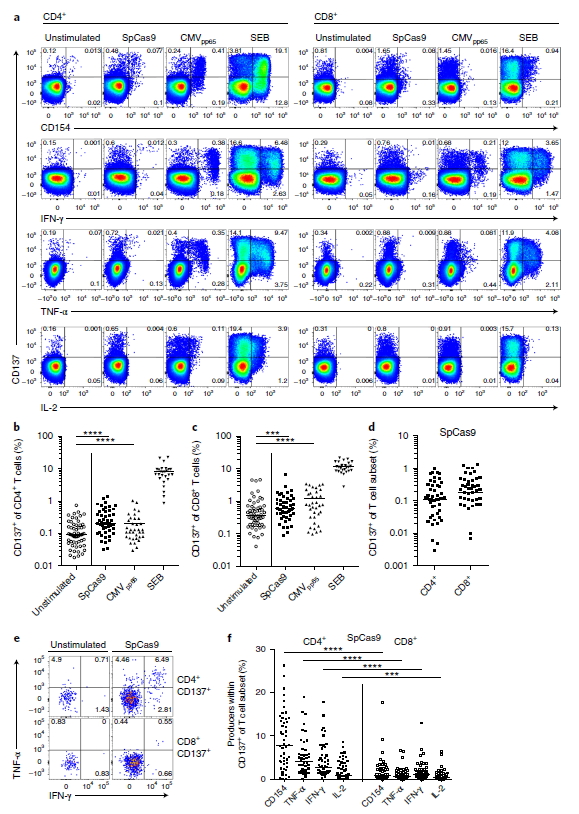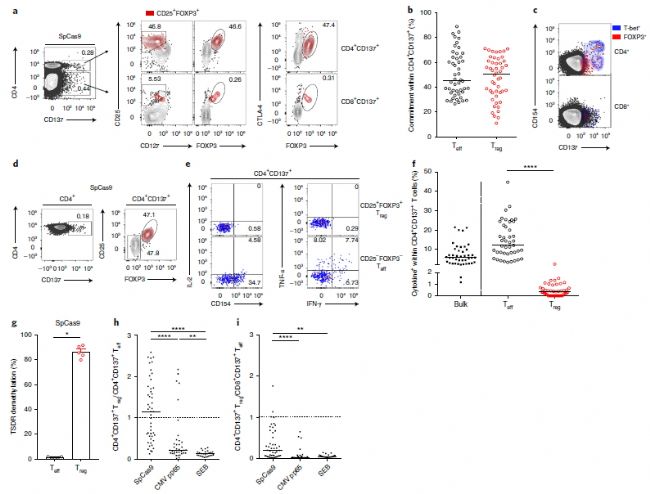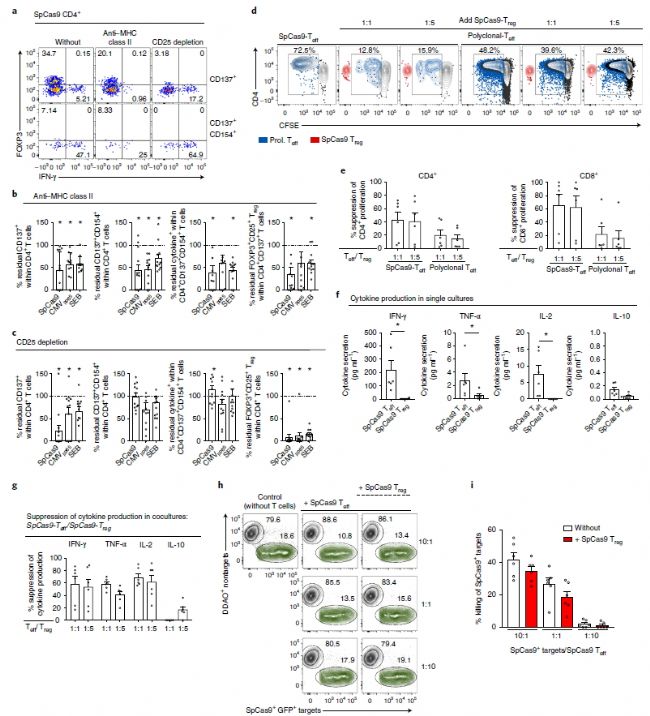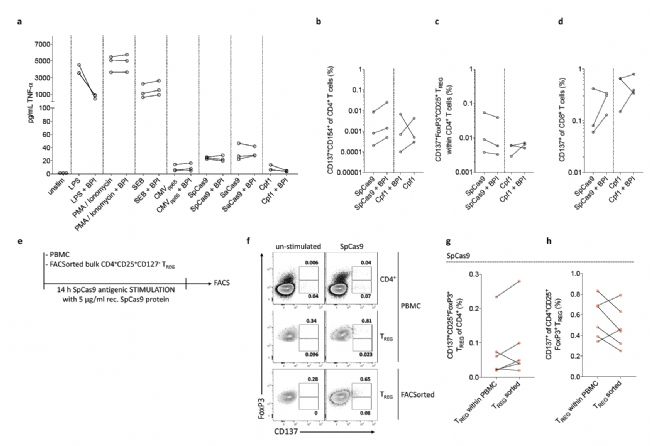Nature medicine CRISPR–Cas9 nuclease immunogenicity study
Cas9 nuclease and its immunogenicity
S. pyogenes ca 9 (Spcas 9) is the first CRISPR-related nuclease (Cas) for introducing double-strand breaks in specific DNA sequences. Due to the adaptability and significant efficiency of the target, it has become the most widely used gene editing tool in the research field and potential clinical treatment methods. The high fidelity Cas 9 enzyme and Cas 9 directional base editor were developed to reduce the risk of off-target effects and chromosomal aberrations. However, most of the enzyme variants are derived from the Spcas 9 enzyme of the facultative pathogen S. pyogenes. Suppurative pharyngitis and pyoderma are among the most common diseases associated with S. pyogenes infection worldwide. Considering the high incidence of S. pyogenes infection, we hypothesized that Spcas 9 can induce an adaptive memory immune response in humans. The purpose of most therapeutic applications is to transiently express Cas9 nuclease or direct the protein into target cells. Therefore, SpCas 9-specific antibodies may be negative. However, intracellular protein degradation processes result in the appearance of Cas9 fragments on the surface of gene-edited cells, which may be recognized by SpCas 9-reactive T cells.
Study on Cas9 reactive T cells and effector factors
Scientists from the Medical Immunology Research Center at Charité University in Germany published the results of the latest issue of Nature Medicine: High prevalence of Streptococcus pyogenes Cas9-reactive T cellswithin the adult human population. To detect SpCas-9-induced T cell responses, human peripheral blood mononuclear cells (PBMCs) were stimulated with recombinant Spcas 9, and CD3, CD4, and CD8 T cells were detected by flow cytometry using a set of T cell activation markers (CD137). , CD 154) and effector cytokine production (IFN-γ, IFN-γ) tumor necrosis factor-α (TNF-α), interleukin-2 (IL-2) analysis of T cell reactivity
result
Ubiquitous peripheral SpCas9-reactive T cell response in human donors
 SpCas9-reactive T cell response contains a substantial proportion of Treg cells
SpCas9-reactive T cell response contains a substantial proportion of Treg cells
 SpCas9-reactive Tregcells suppress their SpCas9-reactive Teff counterpart
SpCas9-reactive Tregcells suppress their SpCas9-reactive Teff counterpart


The TNF-α assay in this study was performed by the ProteinSimple Ella hypersensitive microfluidic ELISA system.
TNF- α release assay. To test for the potential endotoxincontamination of the recombinant Cas proteins, detection of human TNF-α in supernatants of whole blood wasperformed with the Ella system assay (ProteinSimple) , according to the manufacturer's instructions. TNF-α release was assessed In the whole blood assay by thegiven reagent alone and in presence of 10 μg ml−1 BPI. Heparinized whole blood fromhealthy volunteers was diluted 1:10 with RPMI medium and stimulated with either 500 ng ml−1 lipopolysaccharide, 25 ng ml−1 phorbol Myristate acetate/2 μ g ml−1 ionomycin, 1 μg ml−1 SEB, CMV pp65overlapping peptide pools at 1 μ g ml−1 or 5 μ g ml−1 SpCas9/SaCas9/Cpf1 for 24 h at 37 °C. Aftercentrifugation for 15 min at 1,000 g at room temperature, the supernatantswere collected. Measurements were performed in the Immunological Study Lab of the BCRT. For each sample, the respective optical density values ​​of TNF-α concentration calculated on the basis of a calibration c Urve were obtained by subtracting the blank provided by thevendor. The mean concentrations and standard deviations of the samples werecalculated.
4 Wire Intercom System,Analog Intercom System Doorbell,China 4 Wire Video Door Phone,4 Wire Connection System,4 Wire Intercom
Zhuhai Mingke Electronics Technology Co., Ltd , https://www.mingke-tech.com